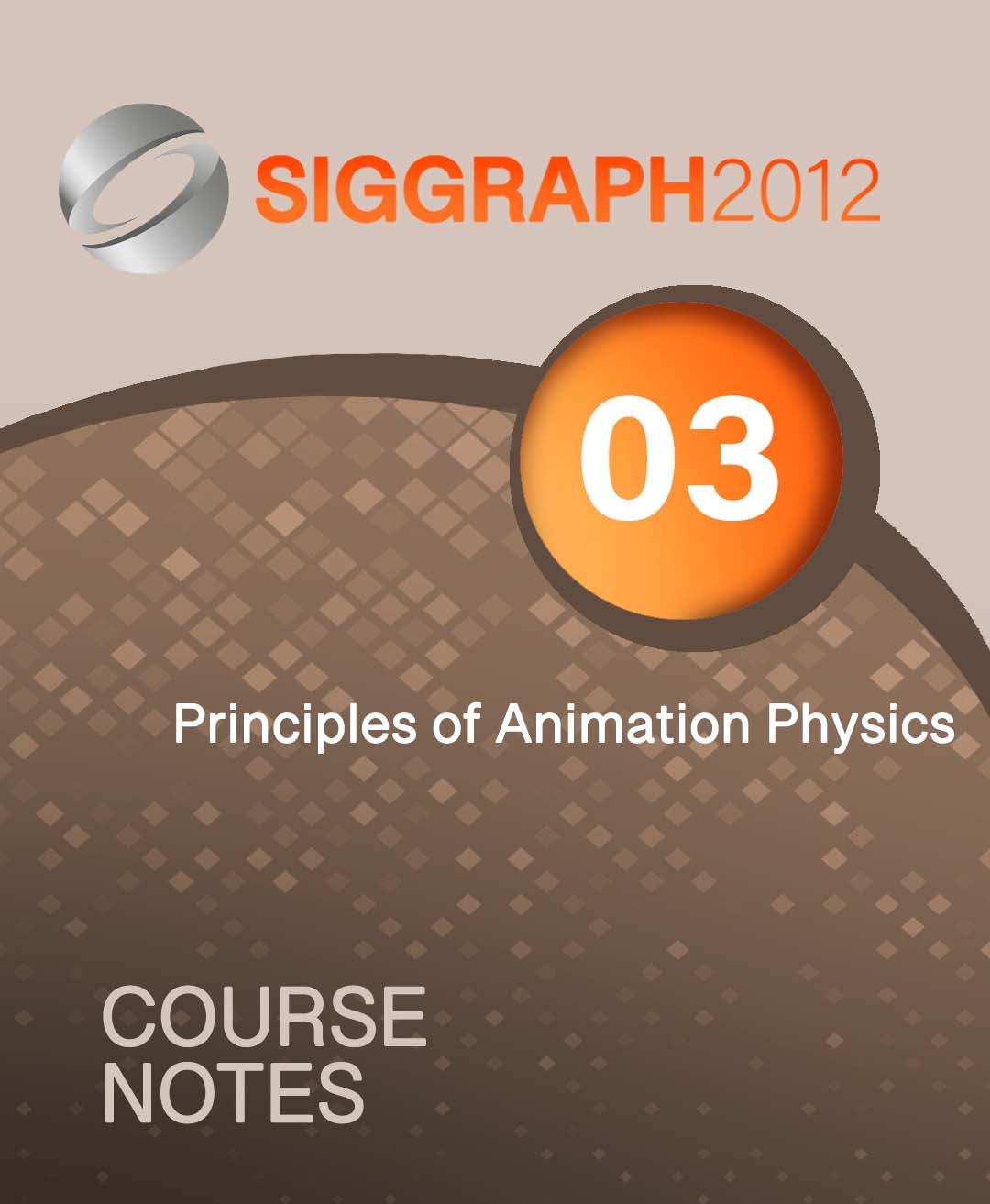“Principles of Animation Physics” by Garcia
Conference:
Type(s):
Entry Number: 03
Title:
- Principles of Animation Physics
Course Organizer(s):
Presenter(s)/Author(s):
Abstract:
- Timing, Spacing, and Scale
- Law of Inertia
- Momentum and Force
- Center of Gravity
- Weight Gain and Loss
- Action-Reaction
Description
Why should a character animator care about physics? If you’re going to be a surgeon then you need to know advanced anatomy; for life drawing a basic knowledge of muscles and bones is helpful. If you’re going to be an engineer then you need to know calculus and physics; as a character animator a basic understanding of mechanics and bio-mechanics is helpful. In Chuck Amuck, Chuck Jones writes, “Comparative anatomy is a vital tool of the complete animator or director.” The purpose of this course is to make physics another tool in your animator’s toolbox. At San Jose State I teach Physics of Animation, a one semester course for animation artists. The first eight weeks of the semester cover mechanics and bio-mechanics; this SIGGRAPH course is a distillation of those 16 lectures down to a three hours. The focus of today’s course is character animation, though many of the concepts are also useful for character effects, such as hair and clothing. Physics is also useful for effects animators and for lighting artists but we won’t have time to get to those areas today. All animators are familiar with the “Principles of Animation” as described by Ollie Johnston and Frank Thomas in their book The Illusion of Life: Disney Animation. These principles, such as “Squash and stretch” and “Anticipation”, give helpful guidance to animators. And since they describe motion it’s not surprising that many of the principles of animation are based on physical laws. For example, the animation principle of follow-through is based on the Law of Inertia. We’ll follow the successful model introduced by Johnston and Thomas and make a list of principles to organize our understanding of physical motion. Specifically, our Principles of Animation Physics will be:
In the first half of the course I’ll explain each principle and how it applies in simple situations. Then in the second half we’ll use these principles to break down and understand such actions as jumping and walking. One last thing before we start: These principles of animation physics are not for the purpose of creating physically accurate motion. They are guides to help you interpret and understand physical motion. Animators commonly use video reference, not to copy it but to extract the essence that they need. Using physics you’ll be able to imagine scenarios, such as a giraffe on a tightrope or a lion on trapeze, that you’ll never find on YouTube. To quote Chuck Jones once more, “We must all start with the believable. That is the essence of our craft.”




